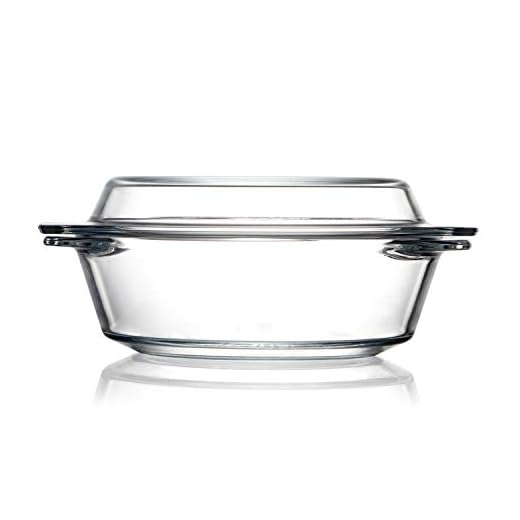
In this step-by-step guide, “How to Defrost Food Safely with the Panasonic NN-SN966S Microwave,” we will explore the essential techniques for safely defrosting food while preserving its quality. Utilizing the advanced features of the Panasonic NN-SN966S Countertop Microwave, this guide will walk you through the process to ensure that your food is defrosted evenly and safely, minimizing the risk of harmful bacteria growth. Whether you’re thawing meat, poultry, or seafood, understanding the right settings and methods will help you achieve optimal results every time.


Panasonic NN-SU66LS 1100W Countertop Microwave Oven with Genius Sensor Cooking and Auto Defrost
Step 1: Prepare the Food
Remove any packaging from the food. Check for plastic wrap or sealed packaging and carefully peel it off. Place the food on a plate or in a shallow dish to catch any drips. Ensure that the food is fully exposed to air for even defrosting.


Step 2: Place Food in a Microwave-Safe Dish
- Choose a microwave-safe dish made from glass, ceramic, or microwave-safe plastic.
- Avoid using metal containers, as they can cause sparks and damage your microwave.
- Ensure the dish is large enough to hold the food without overcrowding, allowing for even heating.
- Place the food in the dish, covering it loosely with a microwave-safe lid or microwave-safe wrap to catch moisture while preventing splatters.
Step 3: Select the Defrost Function
Power on your Panasonic NN-SN966S microwave by pressing the “Power” button. Select the ‘Defrost’ function by turning the dial or pressing the appropriate button on the control panel. Notice how this setting automatically adjusts the microwave’s power level, ensuring safe and efficient defrosting. Follow the prompts on the display to enter the weight or type of food you are defrosting for optimal results.
Step 4: Enter the Weight of the Food
Input the weight of the food you are defrosting directly using the microwave’s keypad. Ensure you enter the weight in pounds or kilograms, depending on your microwave’s settings. Double-check the number you’ve entered for accuracy; this is crucial for the microwave to calculate the correct defrosting time. Once you are confident about the input, proceed to the next step.
Step 5: Start the Defrosting Process
- Press the ‘Start’ button to initiate the defrosting process.
- Keep an eye on the food as it defrosts, ensuring it is doing so evenly.
- Pause the process if you notice any uneven spots and rearrange the food if necessary.
- Check the food periodically, flipping or stirring it to promote uniform thawing.
Step 6: Check the Food Periodically
Pause the microwave halfway through the defrosting time. Open the microwave door and carefully check the food for any signs of thawing. If you notice that some areas are defrosting faster than others, turn or rearrange the food to ensure even thawing throughout. Close the door and resume the microwave to complete the defrosting process.
Step 7: Finish the Defrosting
Check the food for any icy areas once the defrosting cycle is complete. Feel around the edges and in the center to ensure it’s evenly thawed. If you still find frozen spots, return the food to the microwave and repeat the defrosting process for a short burst of time. Monitor closely to prevent cooking the edges while the center continues to thaw.
Step 8: Cook the Food Immediately
Cook the food immediately after defrosting to ensure safety and prevent bacterial growth. Heat the food thoroughly, reaching the appropriate internal temperature, which varies depending on the type of food. Avoid refreezing any food that has been defrosted in the microwave unless you have cooked it first. Remember, keeping food safety a priority will help you enjoy your meals without worry.
Step 9: Clean the Microwave
Wipe down the interior of the microwave with a damp cloth or sponge immediately after use. Use a mild dish soap solution for any stubborn spills or stains to break down food particles effectively. Rinse the cloth or sponge and wipe again to remove any soap residue. Leave the microwave door open for a few minutes to allow it to air dry, ensuring no moisture is trapped inside.
Safe and Effective Defrosting
In conclusion, defrosting food safely with your Panasonic NN-SN966S microwave is both simple and effective. By adhering to the steps outlined in this guide, you can take full advantage of the microwave’s defrost function while ensuring that your food remains safe and maintains its quality. Remember, proper food handling is key, so enjoy your perfectly defrosted meals with confidence!
Essential Items Needed
- Panasonic NN-SN966S Microwave
- Food to be defrosted
- Microwave-safe dish
- Food scale (optional)
- Meat thermometer (optional)
- Clean cloth or sponge for wiping
- Water (for cleaning)

Master Safe Defrosting
- Use the Defrost Function: Familiarize yourself with the defrost feature on your Panasonic NN-SN966S microwave. It’s specifically designed to thaw food safely and evenly
- Select the Right Food Type: Ensure you choose the appropriate defrost setting based on the type of food you’re thawing—meats, poultry, seafood, or vegetables
- Remove Packaging: Always take your food out of any packaging or containers before placing it in the microwave to prevent melting or leaching harmful chemicals
- Cut into Smaller Pieces: If possible, cut larger items into smaller, uniform pieces. This helps them defrost more evenly and quickly
- Use a Microwave-Safe Dish: Place your food in a microwave-safe container to prevent any harmful reactions and ensure even heating
- Monitor the Time: Keep an eye on the defrosting process. Check the food every couple of minutes to ensure it’s not starting to cook, especially with meats
- Rotate or Flip: If your microwave doesn’t have a rotating turntable, pause the process to manually rotate or flip the food for even thawing
- Check for Cold Spots: After defrosting, check for any cold spots in your food, as this can indicate it hasn’t fully thawed. If needed, return it to the microwave for a few more seconds
- Cook Immediately: After defrosting, cook the food right away to prevent bacterial growth. Never refreeze food that has been thawed in the microwave without cooking
- Clean Your Microwave Regularly: Maintain hygiene by cleaning your microwave after each use, especially after defrosting, to avoid cross-contamination
Step-by-Step Guide to Mastering Your Panasonic NN-SN966S Microwave Features
- Familiarize Yourself with the Controls: Take a moment to explore the control panel. The keypad includes options for cooking, reheating, and defrosting, as well as a dial for setting time and power levels. Understanding these will make cooking easier
- Select Your Cooking Power: Use the “Power Level” button to adjust the cooking power based on what you’re heating. For example, use lower power for defrosting and higher power for cooking
- Set the Cooking Time: Press the number keys to enter the desired cooking time. If you’re unsure, start with shorter times and check your food frequently to avoid overcooking
- Use the Sensor Cooking Feature: This handy feature automatically adjusts cooking time based on the moisture released from your food. Simply select the food type you’re cooking, follow the prompts, and let the microwave do the work!
- Practice Safety First: Always use microwave-safe containers and avoid metal. Also, be cautious when removing hot items to prevent burns
- With these tips, you’re well on your way to mastering your Panasonic microwave! Enjoy your cooking!









I followed this guide for some ground turkey, and it turned out so well! I couldn’t believe how easy it was. Now I’m never going back to thawing in the sink. Seriously, this is a game changer!
Thanks for sharing your success! We’re glad the guide helped you with the chicken breasts. It’s definitely safer and quicker to defrost in the microwave. Happy cooking!
Just wanted to say that I tried this guide last night with some frozen chicken breasts, and wow, it worked like a charm! I followed all the steps, especially the weight input part. It made sure the chicken was perfectly defrosted. I usually just leave it out on the counter, but this is way safer. Thanks for the detailed instructions!
For those who are wondering about other methods, I sometimes just put my frozen meat in cold water for a quick defrost. It’s a bit messier, but it works in a pinch! Just don’t forget to cook it right after.
That’s a good alternative! Just be cautious with the temperature to avoid bacteria growth. Each method has its pros and cons!
Has anyone tried defrosting bread in the microwave? I heard it can get a bit chewy. Any tips for that?
Yes! When defrosting bread, try using lower power settings and check every 10-15 seconds to avoid chewiness. It’s best to keep it wrapped to retain moisture!
I often just use the quick defrost setting without entering the weight. Has anyone else tried this? I feel like it sometimes overcooks the edges. What do you think? How important is it to enter the weight?
Great question! Entering the weight helps ensure even defrosting. If you find edges getting cooked, try adjusting the time or entering the weight for more accuracy. It can make a big difference!
I adapted this guide for my frozen fish fillets by wrapping them in a paper towel before microwaving. It really helped to keep them from getting rubbery. Anyone else do this?
That’s a clever adaptation! Keeping moisture in can help with texture, especially for fish. Thanks for sharing your method!
I’m looking for advanced tips on how to prevent hot spots while defrosting. Is there a technique or setting on the NN-SN966S that can help with this?
To prevent hot spots, try rotating the food halfway through the defrosting process. Also, using lower power settings can help distribute heat more evenly!
I’ve been using my Panasonic NN-SN966S for a while now, and I have to say, the defrost function is a game changer! I usually pop in some veggies too. Just make sure to check them periodically because they can get mushy if you’re not careful.
Thanks for the tip! Vegetables can indeed get mushy if left in too long. Glad you’re enjoying your microwave!
I had a bit of trouble with the defrosting time. I set it for 5 minutes but my beef was still frozen solid. Should I have entered the weight or adjusted the time? Any tips?
It’s better to enter the weight for more accurate timing. If it’s still too frozen, try defrosting in shorter increments and check more often.